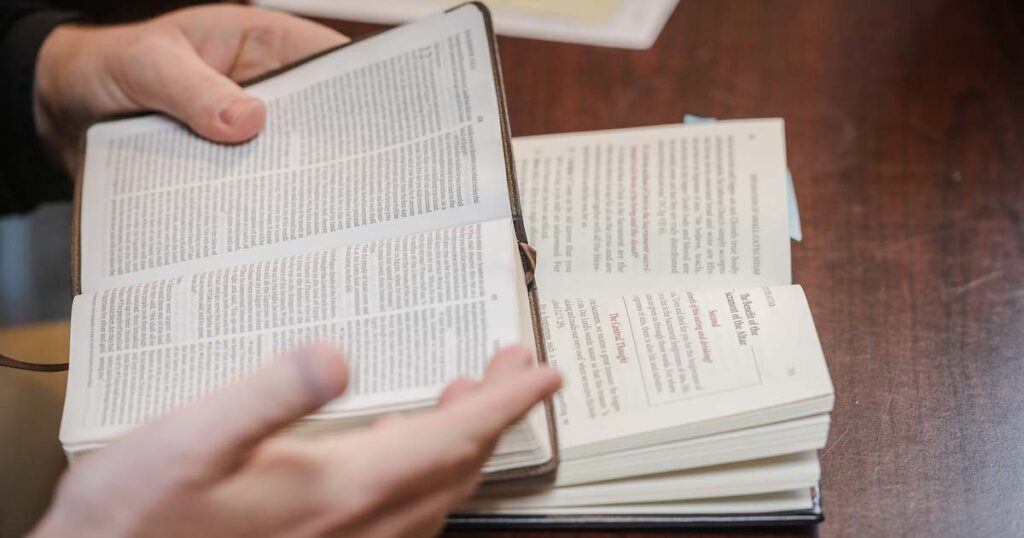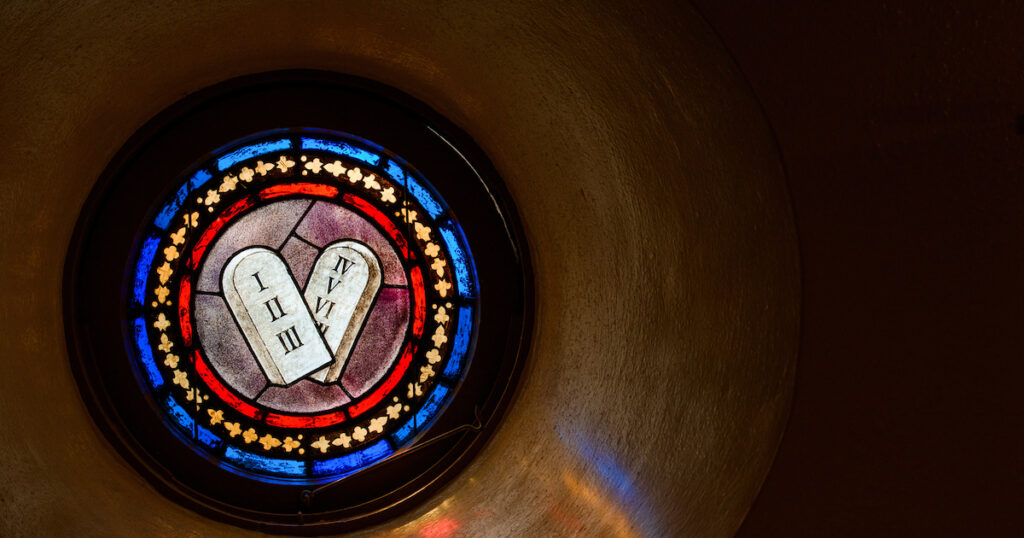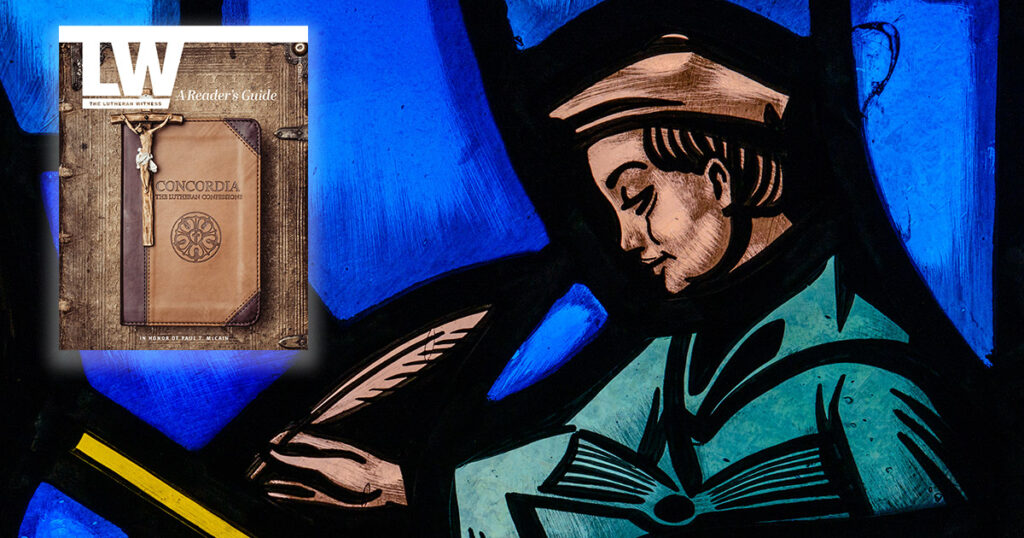Editor’s Note: This is a lightly edited reprint of an article that originally appeared in the April 1999 issue of The Lutheran Witness.
Many Lutherans think of the Small Catechism as a teenage confirmation-class textbook. But it’s not just for kids!
by Charles A. Gieschen
For many Lutherans, mention of Luther’s Small Catechism recalls our youth and memorizing substantial portions of this small book for confirmation instruction. This catechism was used with the Bible as a textbook to teach us the basic truths of God’s Word. It was this book that nurtured many of us in our understanding of sin, Law and Gospel, the Trinity, the person and work of Christ, the sacraments and many other teachings central to the life of a Christian.
Often our “little book” shows these years of use (or abuse) with a broken binding, dog-eared pages, and plenty of pencil drawings in the margins!
While the study of the Small Catechism is not always the most pleasant experience of late childhood, we, as adults, can treasure that foundation built on God’s Word.
Sadly, this is where contact with the catechism often remains — in the distant and fading memories of our childhood. Our catechism is possibly boxed in some storage room at our parents’ home or gathering dust on some bookshelf. Too many of us as adults continue to view the Small Catechism as a children’s textbook. Now we are mature; we can use the Bible alone, or the Bible plus more sophisticated tools for spiritual growth — those study guides that come in large three-ring binders accompanied by a video!
Dr. Martin Luther, however, did not write the Small Catechism to be simply used by pastors as a textbook for children’s instruction. He primarily intended it to be a family prayer book that is used frequently in the Christian home. One needs only read the headings of each of the six chief parts to see that Luther intended people to continue studying the catechism in the home: “As the head of the family should teach it in a simple way to his household.” How many parents have put the teaching of the catechism solely on the pastor in his brief weekly classes conducted for just one or two years of their child’s life?
What kind of modeling would go on in our families if parents would keep their Small Catechism handy and review a portion of it as part of their daily family devotions? The 10 Commandments, the Creed, the Lord’s Prayer, the sacraments and confession become much more the fabric of our being when presented, taught and prayed over the course of many years.
Let’s call this “learning by heart” rather than “memorization,” since faith involves much more than the mind. Luther stresses this personal nature of faith in the first-person pronouns of his explanations (“I believe that God has made me and all creatures; that He has given me my body and soul, eyes, ears, and all my members, my reason and all my senses).
Occasionally, I have heard some children and parents say that they wished that we would study only the Bible instead of the catechism. Every pastor and parent should use the Bible as they teach. But we need also to remember that the catechism is built around central texts from the Bible, every word of the 10 Commandments and Lord’s Prayer, every truth of the Creed, the institution and importance of both sacraments, and guidance on confession and forgiveness.
Luther wrote his catechism to be a servant that helps us understand the full text of the Bible, especially the clear and central message that Jesus Christ “has redeemed me, a lost and condemned person, purchased and won me from all sins, from death and from the power of the devil; not with gold or silver, but with His holy, precious blood and with His innocent sufferings and death.”
Here are some practical suggestions for family use of Luther’s Small Catechism in the home:
First, in his preface, Luther encourages us to select one translation of the catechism and stick with it. Concordia Publishing House released a new edition of the catechism in 1991 and again in 2017. If you have young children now may be a good time to update the translation you will use in your home. Talk to your pastor about what translation will be used during the coming years in your congregation.
Second, study the basic texts first (i.e., the 10 Commandments, the Apostles’ Creed, the Lord’s Prayer). With young children, these are learned effortlessly by using them frequently in your family’s daily devotions.
Third, study Luther’s brief explanations by including portions of them as part of your devotions. It is valuable to systematically go through the chief parts in order and, at the same time, be flexible in selecting a portion of the catechism that fits best with your devotion or the time of the church year. As your children get older, challenge their faithful learning (and competitive nature) to repeat these texts without reading them, encouraging their depth of understanding.
Fourth, adults can renew their understanding of the catechism by working with their children at home during the time of their formal confirmation instruction.
Fifth, learn the suggested prayers in the Small Catechism; they can help in developing daily practical Christian piety.
If individuals desire to become and remain Lutherans, it makes sense that they learn and faithfully continue in what Lutherans confess as the teaching of Scripture. In addition to the three ecumenical creeds, the one Lutheran confession that is specifically formulated for instruction in each church and home is Luther’s Small Catechism. It is a brief prayerbook of truths central to our daily faith and life in Jesus Christ. Rather than being packed away after confirmation, The Small Catechism can regain a cherished position of frequent use alongside the Bible and hymnal in our homes.
After all, the foundational doctrine it contains is not just for kids!
Charles Gieschen is assistant professor of exegetical theology at Concordia Theological Seminary, Fort Wayne, Ind.
Photo: LCMS Communications/Erik M. Lunsford






Is there a print version of this I could order?
No. These are only being published online. You are free to print them off, however. We simply ask that you include the link so that people can find the articles if they’re so inclined.
Thank you. That is a good and useful article.
“But test everything…” (1 Thess. 5:21 ESV).
Luther prefaced his Small Catechism with remarks that were addressed to “pastors and preachers and stressed that “young and inexperienced persons” should “commit it to memory.”
If Luther “primarily intended [the Small Catechism] to be a family prayer book,” as the author here claims, why isn’t that plainly evident from his own preface?
The author says that the Small Catechism once had a “cherished position of frequent use.” What is the evidence for that? How has at the prevalence, frequency, and type of use been assessed?
It’s relatively easy to come up with largely untested teaching suggestions, giving little thought to the time and resources and kind of judgment actually needed to implement those suggestions well.
The 2017 edition of the Small Catechism with Explanation boasts 374 questions and 1142 scripture passages. Is crafting an at-home catechism review schedule aligned with themes of the church year a good idea, as the author here suggests? Then perhaps our church body should make an effort to publish one.
It seems to me that a church body that is serious about helping and encouraging parents to teach at home would provide user-friendly tools that have been thoughtfully crafted and tested following best practices for instructional design, and in light of —
• the various needs, resources and constraints of parents,
• the different ages and abilities of their children, and
• what their children were already learning in their church and school.